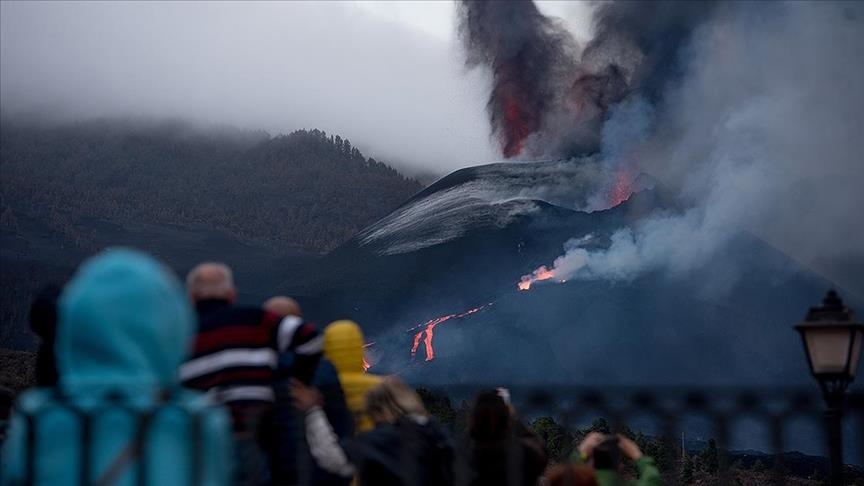The volcano on the Spanish island of La Palma continued to erupt with force on Wednesday, spewing lava 600 meters (1,968 feet) into the air and intensifying seismic activity.
In the 24 hours leading up to Wednesday afternoon, Spain’s National Geographic Institute detected 150 earthquakes on the island, the largest of which had a magnitude of 4.8.
The institute Tuesday also noted that the ground on parts of the island swelled up by as much as 10 centimeters (3.9 inches).
On Tuesday night, part of the volcanic cone collapsed in on itself, allowing lava to flow out more powerfully and shift its path.
A new river of lava started flowing to the south, but it stopped just 150 meters (492 feet) away from a solar energy farm, said Miguel Angel Morcuende, head of the volcano emergency services PEVOLCA, on Wednesday.
After posting images of the lava flows reaching twice the height of Eiffel Tower, the volcano institute INVOLCAN shared a video of a dense collum of ash filling the sky.
Many of the nearby areas that have not been bulldozed by lava have been instead flooded with fine black ash.
The emissions of sulfur dioxide have also been on the rise, reaching an average of 40,800 tons per day, suggesting to experts that the end of the eruption is still far away.
According to Pedro Antonio Hernandez of INVOLCAN, sulfur dioxide emissions will have to drop to 250 tons a day before it is over.
So far, 908 hectares (2,243 acres) of the small island have been overtaken by lava and more than 2,000 buildings have been destroyed, according to the Copernicus Satellite.
The banana industry, one of the island’s strongest economic sectors, has already lost around €100 million ($116 million), according to the Canary Islands government.
The tourism industry is also suffering, with La Palma’s airport the only one in Spain that is expected to see a drop in flights this winter.
